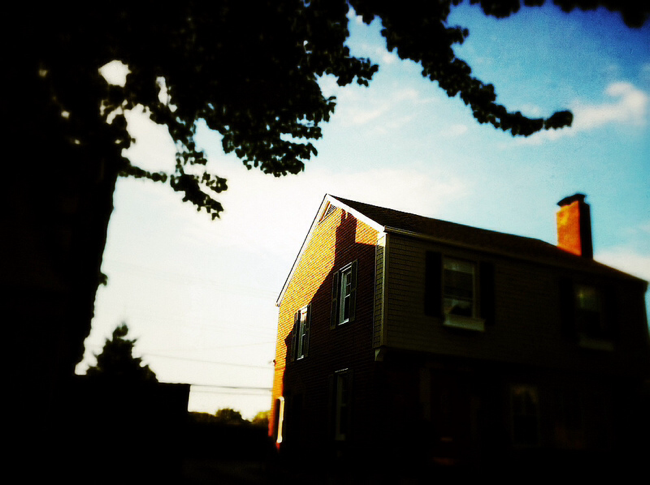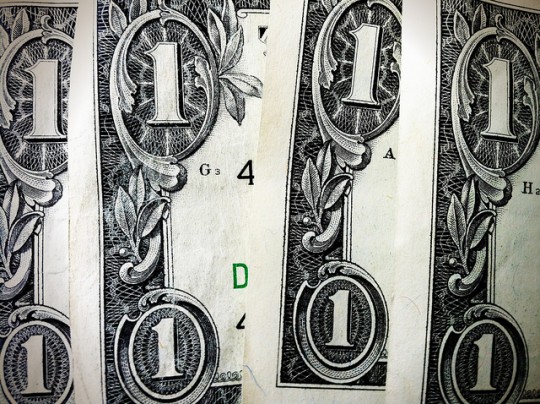During the summer selling season, sales of previously owned homes reached the highest level in nearly four years. But, according to estimates from the National Association of Realtors, sales of existing homes fell 1.9 percent in September. Lawrence Yun, NAR’s chief economist, said the decline was expected. Affordability levels have fallen as home price increases have easily outpaced income growth, Yun said. Still, sales are 10.7 percent above year-ago levels and have been better than the year before for the past 27 consecutive months. Also in the report, the median time on market for all homes was 50 days, up from 43 days in August but far better than last year’s 70 day median. Total housing inventory was virtually unchanged, with a 5-month supply of homes available at the current sales pace. More here and here.
Archive for October 2013
Fiscal Debates Have Minimal Effect On Housing
The recent government shutdown, debate over the debt ceiling, and ongoing fiscal uncertainty threatens to slow an expected pickup in overall economic growth this quarter, according to Fannie Mae’s Economic & Strategic Research Group. As a result, the ESR group has downgraded their forecast for full-year growth. But despite the slight change in projected economic activity, the housing market is expected to continue to improve. Doug Duncan, Fannie Mae’s chief economist, said these fiscal policy issues appear to have had only a minimal effect on the housing market and, because prices rose rapidly over the past year, household net worth should be able to withstand any fallout. Duncan added that the continuation of the Fed’s securities purchases should keep mortgage rates down, helping more homeowners take advantage of refinance opportunities. More here.
Builder Confidence Slips Slightly In October
Builders were slightly less optimistic about the market for newly built, single-family homes in October, according to the National Association of Builders’ Housing Market Index. The Index measures builder confidence on a scale where any number above 50 indicates more builders view conditions as good than poor. In October, the Index fell two points to 55. According to NAHB chief economist, David Crowe, the government shutdown contributed to the slip in confidence. Crowe said the shutdown and uncertainty regarding the nation’s debt limit caused builders and consumers to take pause. Still, the component measuring sales expectations for the next six months posted a reading of 62 and current conditions were scored at 58. Rick Judson, NAHB’s chairman, said builder optimism remains above 50 and there are still signs of pent-up demand in many markets across the country. Judson believes the drop in confidence is due to temporary uncertainty and challenges with regard to cost and availability of labor. More here.
Refinancing Activity Continues To Rise
According to the Mortgage Bankers Association’s Weekly Applications Survey, refinancing demand increased again last week, rising 3 percent after a 2.5 percent gain in the previous week’s survey. But despite the improvement, total mortgage application demand was nearly flat, registering just a 0.3 percent increase due to a decline in purchase loan activity. That decline was caused, in part, by the effects of the federal government’s shutdown. Mike Fratantoni, MBA’s vice president of research and economics, said the shutdown had a notable impact on the mortgage market, as applications for government programs dropped more than 7 percent to their lowest level since December 2007. The survey also found the average contract interest rate for 30-year fixed-rate mortgages up slightly from the week before. The MBA’s weekly survey covers more than 75 percent of all U.S. retail residential mortgage applications. More here.
Housing Affordability Still High Despite Market Adjustments
Over the past few years, the combination of low home prices and falling mortgage rates led to historic levels of housing affordability. Buyers were able to afford more for their money, which along with an improving economy, led to a rebound in the housing market. This year saw increases in prices, rates, and sales, all of which indicated that housing was in the midst of a sustained and continuing recovery. But that market recovery also impacted affordability levels. Affordability has been slowly declining as mortgage rates and home values increased. But, according to Svenja Gudell, director of economic research at Zillow, housing affordability is still much higher than historical levels as compared to an average from 1985 to 2000. Gudell says recent fluctuations in the housing market are normal adjustments and part of the process of home prices returning to more sustainable levels. More here.
Economists Forecast Gains For Housing In 2014
A gathering of economists recently brought together by the National Association of Home Builders forecast continued gains for the housing market, despite obstacles that are impeding its recovery. David Crowe, NAHB’s chief economist, said the cards are in play for a decent and fairly strong recovery in 2014 and particularly in 2015. According to Crowe, housing has been growing at two, three, and four times the rate of the rest of the economy in recent quarters. That growth, spurred by a double-digit increase in home prices as well as rising household formations, has led to an increasingly healthy market and optimistic forecasts from experts and analysts. Still, labor shortages, tighter inventory and credit, higher material prices, and inaccurate appraisals are hurting new and existing home sales. And economic uncertainty tied to the government shutdown and debt ceiling debate also threaten housing’s progress. Mark Zandi, chief economist at Moody’s Analytics, feels Congress will resolve these issues quickly but cautions that, if they don’t, it challenges the economic outlook and could result in another recession. More here.

Shadow Inventory Falls To Five-Year Low
Shadow inventory refers to distressed and foreclosed properties that have not yet been listed for sale. These properties have long been discussed by analysts and experts who believe that they’d have a negative impact on housing once they hit the market. Fortunately, new data from CoreLogic shows that, as of this past July, the shadow inventory reached its lowest level since August 2008. Anand Nallathambi, CoreLogic’s chief executive, said the value of the U.S. shadow inventory has dropped by $87 billion over the past year and has steadily declined for 10 consecutive months. In fact, July’s estimates show a year-over-year drop of 22 percent in the number of homes thought to be included in the shadow inventory. That’s a 38 percent improvement from its peak in 2010. More here.






